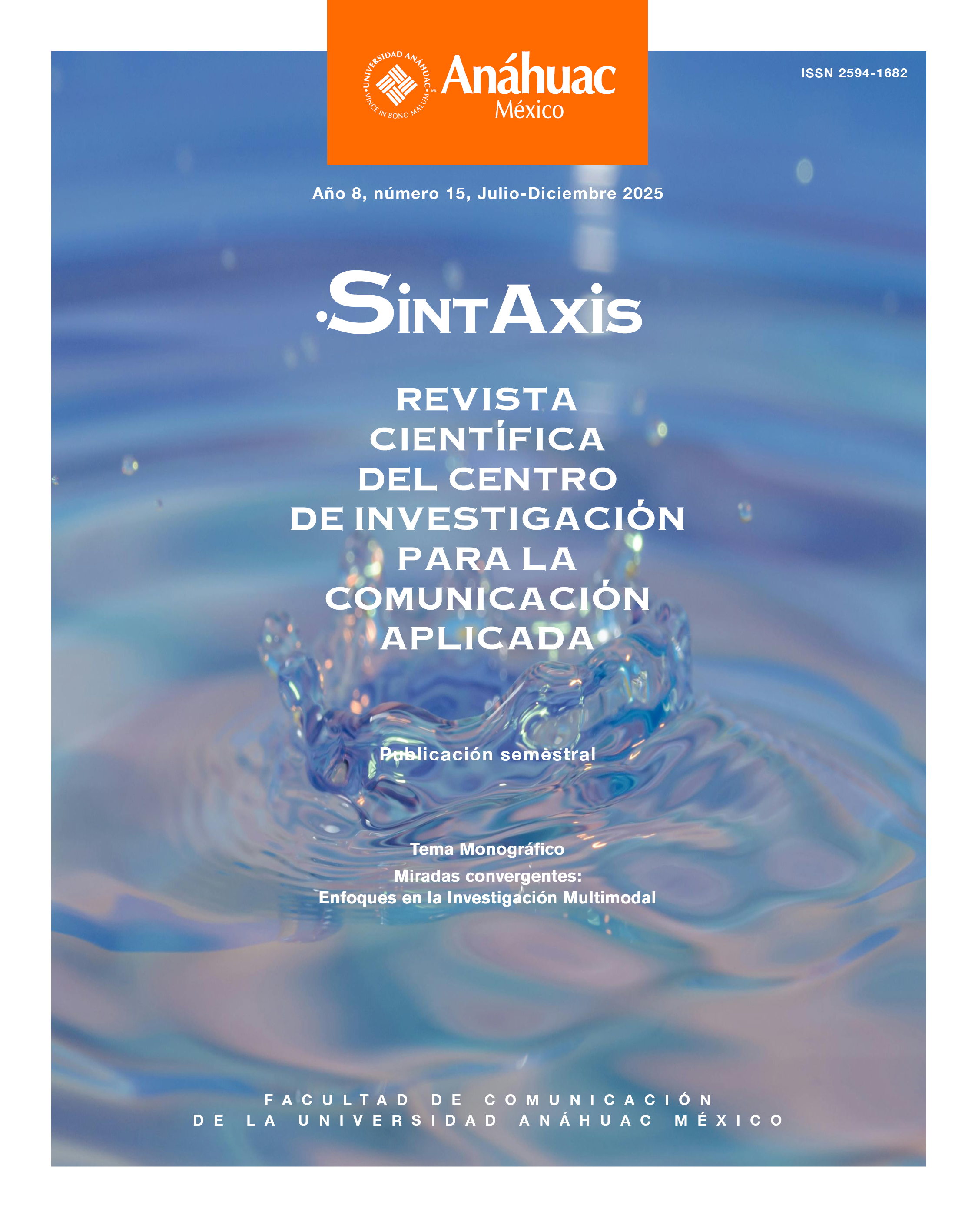Audiovisual conference proceedings: prospects for scientific publication
Main Article Content
Abstract
This article looks at scientific publications and specifically scientific videos. The aim is for scientific audiovisual publications to have a value comparable to printable publications. The introduction questions the scientific recognition of publications, before turning to the characteristics of printable scientific publications, which highlights the characteristics of scientific audiovisual publications. From these generalities, this article specifies a theoretical framework and a methodology for recording/ broadcasting traces of symposia as a modality of scientific publication. The methodology outlines how these principles were applied to the recording of the 2nd and 3rd Visual and Multimodal Methods conferences held at the University
of La Laguna. The results cover the process used to capture and publish the 3rd symposium on Visual Modi Canal-U channel.
Downloads
Article Details
Section

This work is licensed under a Creative Commons Attribution-NonCommercial-NoDerivatives 4.0 International License.
The author keeps the property rights with no restriction whatsoever and guarantees the magazine the right to be the first publication of the work. The author is free to deposit the published version in any other medium, such as an institutional archive or on his own website.
How to Cite
References
Bautier, R. (2013). «Diplomatique». In Encyclopædia Universalis (En ligne). http://www.universalis-edu.com/encyclopedie/diplomatique/
Beauvois, J., & Pansu, P. (2008). «Facteur d’impact et mondialisation culturelle». Psychologie Française, 53(2), 211222. https://doi.org/10.1016/j.psfr.2007.05.002 DOI: https://doi.org/10.1016/j.psfr.2007.05.002
Chartron, G. (2007). Evolution de l’édition scientifique, 15 ans après. In Meimaris, Michael & Gouscos, Dimitris (Éds.), EUTIC 2007: Media and information diffusion: Towards an open society (vols. 12). https://archivesic.ccsd.cnrs.fr/sic_00186675/
CNIL. (2020, novembre 5). Services en ligne: Si c’est gratuit…. Site de la Commission Nationale Informatique et Liberté. https://www.cnil.fr/fr/services-en-ligne-si-cest-gratuit
Dauphin, F. (2022). «Fake News et complotisme sur YouTube: Comment l’algorithme favorise la polarisation des opinions». Revue des Interactions Humaines Médiatisées, 23(1). http://europia.org/RIHM/V23N1/RIHM-23(1)-3-Dauphin.pdf
Ibanez chabertCrosier, D., & Parveva, T. (2014). Le processus de Bologne: Son impact en Europe et dans le monde. UNESCO: IIEP.
Chevry Pébayle, E. (2021). «Pratiques informationnelles des youtubeurs scientifiques au service de la médiation du savoir». Communication. Information médias théories pratiques, 38(2). https://doi.org/10.4000/communication.14808 DOI: https://doi.org/10.4000/communication.14808
Féliz, M., & Marie, J. (2025). «Taux de change et inflation dans les approches d’économie hétérodoxe», Canal U. Séminaire, Recherche Économie Critique.
Goldratt, E. M. (1990). What is this thing called theory of constraints and how should it be implemented? North River Press.
Lamboux-Durand, A., & Bouchez, P. (2013). Protocoles de remémorisation audiovisuelle de l’expérience de collectionneurs, donateurs et témoins: Exemples sur quatre sites du projet TEMUSE 14-45. Valoriser la mémoire des témoins et des collectionneurs d’objets des deux Guerres Mondiales: médiation, communication et interprétation muséales en Nord-Pas de Calais et Flandre occidentale, 129146. http://hal.univ-lille3.fr/docs/00/83/63/28/PDF/communication_integrale_symposium_TEMUSE_Alain_Lamboux-Durand_et_Pascal_Bouchez.pdf
Lemaallem, H., Lamboux-Durand, A., Lemaitre, F., Chebbi, A., Pablo, E. de, Stockinger, P., Legrand, V., & Zrelli, A. (2013). Colloque international sur les archives audiovisuelles et la mémoire à l’ère numérique. https://hal.campus-aar.fr/medihal-01412003
Lévi-Strauss, C. (1962). La pensée sauvage. Plon, impr. 1962.
Löwgren, J. (2011). «The need for video in scientific communication». Interactions, 18(1), 2225. https://doi.org/10.1145/1897239.1897246 DOI: https://doi.org/10.1145/1897239.1897246
Piganiol, P. (1971). «La Concurrence scientifique, II: les effets de publier ou périr». Impact: Sciences et Société, XXI(2), 99190.
Shaikh, A. R., Alhoori, H., & Sun, M. (2023). «YouTube and science: Models for research impact» Scientometrics, 128(2), 933955. https://doi.org/10.1007/s11192-022-04574-5 DOI: https://doi.org/10.1007/s11192-022-04574-5
Rakotoary, S. (2022, juin). Les enjeux de l’agencement de la publication scientifique vidéo: Le cas des VMA (Video Method Articles) de JoVE (Journal of Visualized Experiments). Document Numérique et Société Communication Scientifique et Science Ouverte: opportunités, tensions DOI: https://doi.org/10.3917/dbu.annai.2023.01.0121
et paradoxes. https://hal.science/hal-03705411
Robin, F., Sepulveda, B., & Galitzine, D. (2024). Langue et littérature tibétaines. Un entretien avec Françoise Robin (Inalco), par Bastien Sepúlveda (Inalco). https://hal.campus-aar.fr/hal-04780155
Stockinger, P. (2008). «Les archives audiovisuelles de la recherche: Un programme de production, traitement, conservation et diffusion en ligne de patrimoines numériques audiovisuels en sciences humaines et sociales». La Gazette des archives, 212(4), 101115.
https://doi.org/10.3406/gazar.2008.4515 DOI: https://doi.org/10.3406/gazar.2008.4515
Stockinger, P. (2013, décembre). «Les Archives Audiovisuelles de la Recherche et le Campus AAR. Vers une plateforme “ communautaire ” des archives audiovisuelles». Archives audiovisuelles et mémoire à l’ère numérique. https://hal.science/hal-03206101
Volland-Nail, P. (2013). Stratégies de publication scientifique. Editions Quae. https://www.quaeopen.com/extract/240 DOI: https://doi.org/10.35690/978-2-7592-2003-8
Winkin, Y. (2003). La communication n’est pas une marchandise: Résister à l’agenda de Bologne. Labor. Espace de libertés.
Zwang, A., Fournier, A., & Boissières, C. (2022). «Scolarisation des vidéos YouTube de vulgarisation scientifique en sciences de la vie et de la Terre: Une légitimation éducative à l’aune des visées enseignantes». RDST. Recherches en didactique des sciences et des technologies, 26, Article 26. https://doi.org/10.4000/rdst.4424 DOI: https://doi.org/10.4000/rdst.4424

